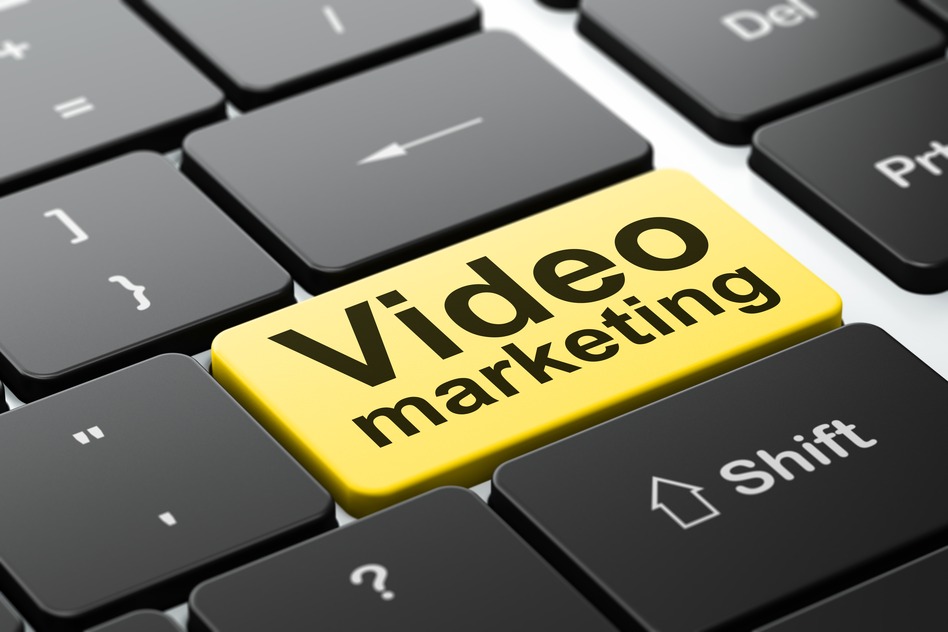Your business needs to be doing video content marketing. This strategy is one of the most effective tactics you can use for earning new business leads and encouraging more sales.
Businesses of all sizes can use video content marketing, too. You don’t have to have a huge budget or someone with the mind of Stanley Kubrick reincarnate to create videos for your marketing campaigns.
You have free reign to decide how each video will help you accomplish your marketing goals and tie in to your overall sales funnel. Tons of options are available for uploading and promoting your videos. Each video you create is therefore incredibly versatile and can help make your other marketing strategies more successful.
But let’s back up. Maybe you aren’t convinced yet that video content marketing is something you need or something that can benefit your business right now. Maybe you aren’t even sure what video marketing is, exactly.
We’ll start with the basics. First, we’ll define video content marketing and then explain exactly how it can benefit your business. Finally, we’ll give you some pointers for measuring the effectiveness of your video marketing campaigns and how well they bring you toward your goals.
Table of Contents
ToggleVideo Content Marketing Defined
Content marketing is a technique used to help businesses earn more customers and more sales. The “content” part refers to media created by the business, such as blog articles, infographics, videos, or helpful downloadable files like a checklist.
Unlike traditional advertising, where a business might pay for ad space that broadcasts messages at someone, content marketing aims to bring people to their website. This is why experts refer to content marketing as an “inbound” strategy, where people voluntarily read your marketing materials and come to you, as opposed to an outbound strategy, which goes out looking for people.
To succeed, the content the business creates must signal to audiences that it is informative, entertaining, or otherwise interesting in some way. The idea is that the content is too good to pass up!
For example, a bride-to-be may be asked to take a quiz to see what historical princess or queen they are, and this quiz can then suggest a type of bridal gown based on that historical figure. Or, someone trying to determine whether they should sue for a slip and fall accident can stumble upon a helpful guide to negligence law and what they need to win a case. Both types of content can end with a call to action to make an appointment or purchase something online.
Pieces of content like these can be discovered anywhere, but social media and online search results are the two most common sources of traffic. Other times, someone may already be visiting a business website and see that they have informative content to offer.
So then what is video content marketing? Simple! It’s when you create videos as a form of content to attract leads. These videos can be hosted on a social media platform like Facebook or Youtube. Or, they can be hosted on your own website with links encouraging people to come watch it.
Video content marketing is an extremely effective strategy for a few big reasons, which we’ll describe below.
Why Your Business Needs Video Content Marketing
Video content marketing has been taking off in a big way lately. Simply put, people now prefer to watch videos over reading text or looking at images. On social media, video content generates 1200% more shares than text content or image content combined.
Businesses that create video content therefore get better return on their investment compared to other methods of content marketing. Their content gets the attention it needs, and it encourages people to share it so that more sales leads come in.
A second big reason you should consider video content marketing is that it is more entertaining and convincing to people than most other forms of marketing. Adding a video to a landing page can increase your conversions by 80%, for instance. Overall, business owners who use video content marketing earn 66% more qualified leads per year, and they also get a 54% lift in brand awareness, on average.
People also increasingly demand content when trying to purchase a good or a service. Explainer videos, for example, are very popular since they can help people understand what the service they need does, exactly. Product videos are even more popular. Four times as many people say they’d prefer to watch a video about a product rather than read a description. 96% of people say video content is useful when they’re trying to make a purchase decisions.
Another important point to consider is that video content marketing doesn’t have to be as hard as it looks! Start by making a few videos explaining what your company actually does. You can also host live Q&A sessions or behind-the-scenes looks and record them for later use.
Or, you can record shortened versions of explanatory blog topics related to your business. Then, you can improve your skills by shooting footage around your business, recording a voiceover, and editing everything together. A professional video production company can also help you turn your ideas into gorgeous videos while helping you tie video content into your other marketing strategies.
How Do You Know If Your Video Content Is Working?
The most important question to answer when spending money on any marketing project is: was it worth it?
Answering that question depends on your goals. You can start simply by measuring things like views, engagement, and referral traffic.
- View Count reveals how many times a video has been viewed total. While someone hitting “play” doesn’t make you money, it does show that your video content is at least being watched. Views can also help you recognize which topics or video types are the most popular. Or, it can reveal that you promoted that video particularly effectively.
- Play Rate compares the number of people who saw your embedded video to the number of people who clicked “play” or watched it. A video with a bad play rate indicates that the title, thumbnail, and other components could be optimized.
- Social Shares count how many times a video you posted on a social media platform like Facebook or Twitter was shared. Like views, shares indicate popularity and a high level of appeal for your audiences.
- Conversions to website visits are a crucial stat. You can include custom links to a product page or your preferred landing page on your video. This link can appear in the description, or it can be included in the text when you share the video online. Tracking conversions is incredibly important because your end goal is to get people to buy. Bringing them to your web pages puts them one step closer to that point.
- Conversion rates are the ratio of people who clicked on your video’s link compared to everyone who viewed the video.
- Demographic data shows the portion of your audience who performed key actions according to different categories. These categories include age, gender, geographic location, and sometimes demographics like income or interests. Each video you create should have a target audience in mind, and demographic stats show you how well you succeeded.
To truly find your video’s return on investment (ROI), you are going to have to create a customer path and then measure each conversion rate from one step to the next. To get this type of data, you need to have a custom URL made for the destination page so that you are only including visits by people who clicked the link associated with the video.
Here’s an example customer path:
200,000 people see your video posted on Facebook
⇓
20,000 watch your video
(10% watch rate)
⇓
1,000 click on the link you provided to go to a page for a product described in the video
(5% video conversion rate)
⇓
Of the people who visit the product page, 23 buy the product
(2.3% product page conversion rate)
In this example, you can see 23 people bought a product. If the product gives the company £55 in profit apiece, they earned £1,265 just from traffic brought in by the video. If their budget for creating and promoting the video cost less than that, then the video officially made them money!
Charting out your video performance like this is the only objective way to know how much ROI a video has earned. You can also model your audience paths in this way to determine your typical conversion rate. Then, you can find ways to increase the conversion rate by doing things like changing the thumbnail, changing the title of the video, or re-editing the video to better appeal to your target demographics.
Of course, there are other goals besides product sales that lead to ROI. You can use different methods to measure performance for custom goals, like maximising shares or making people more aware of the different services you offer. Check out this great post from Contently for more info on creating different ROI models according to your different goals.
Beyond that, everything is experimentation and gradually improving what you do! Keep at it, and if you need help, do not hesitate to ask a video content marketing expert like us for help.




